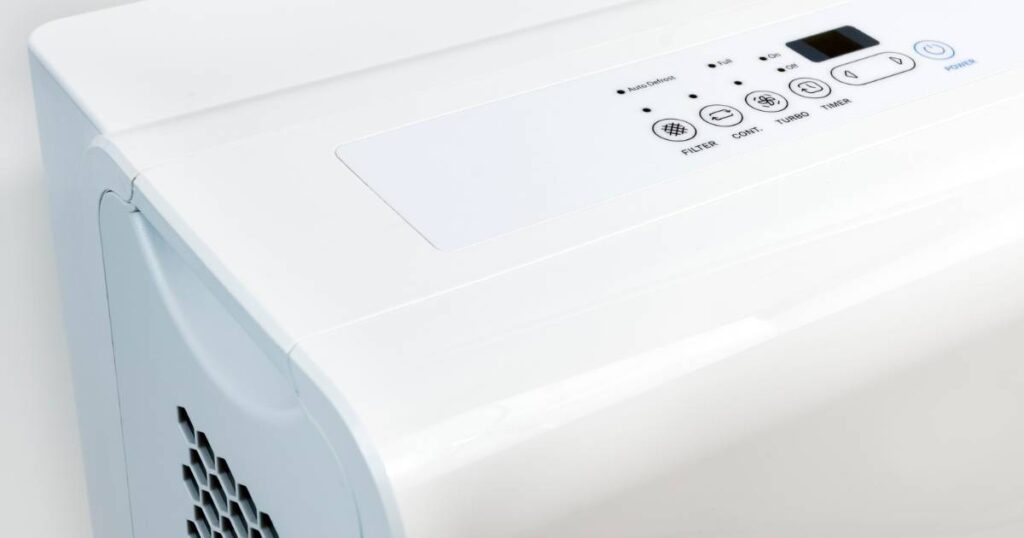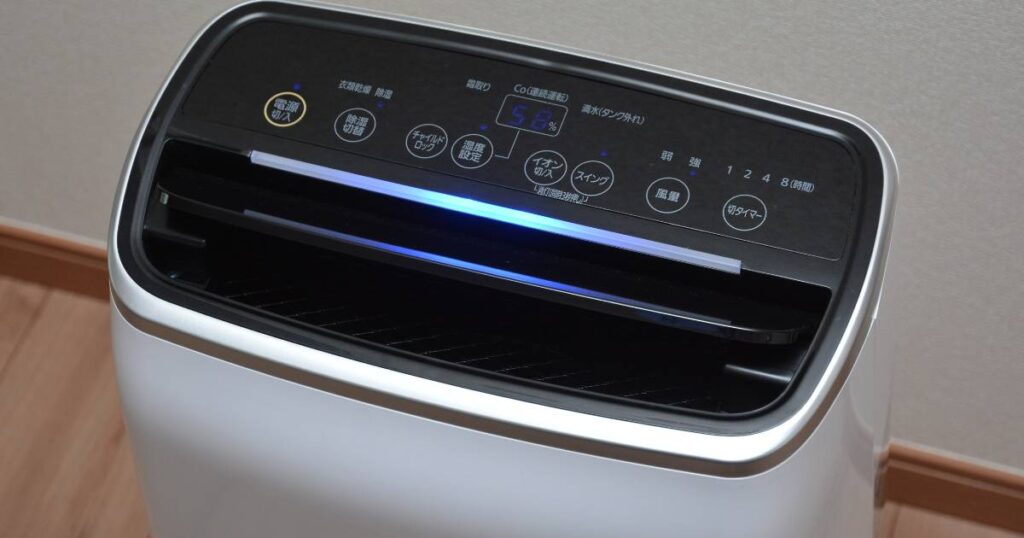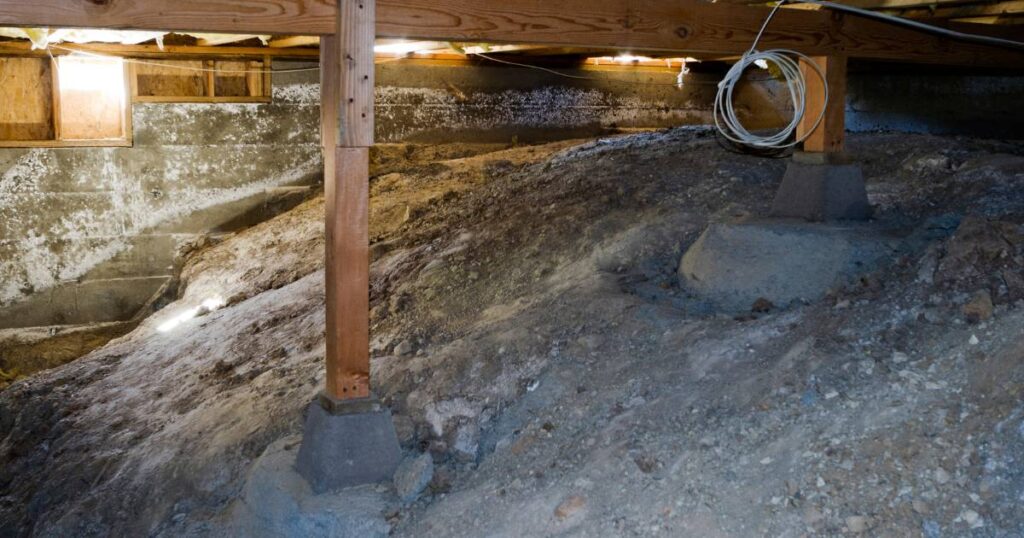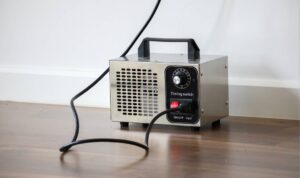What Is Crawl Space Dehumidifier?
A crawl space dehumidifier is a device designed to remove excess moisture from the air in tight, enclosed spaces such as crawl spaces. These areas are often prone to high humidity levels, which can lead to a range of issues such as mold growth, musty odors, and structural damage. A crawl space dehumidifier works by drawing in the moist air, extracting the water vapor, and then expelling the drier air back into the space. By maintaining optimal humidity levels, these units help to create a healthier environment and prevent potential damage to the home.

Benefits of Installing a Crawl Space Dehumidifier
Installing a crawl space dehumidifier offers numerous benefits for homeowners. First and foremost, it significantly improves the air quality within the home by reducing the presence of mold, mildew, and other allergens that thrive in damp environments. This can help alleviate symptoms for those with respiratory conditions and allergies. Additionally, a dehumidifier helps protect the structure of the home by preventing excess moisture from causing damage to wooden beams, insulation, and other materials. This can also lower the risk of pest contamination, as many insects and rodents are attracted to damp conditions.
Proper sizing for a crawl space dehumidifier is crucial for maximizing its benefits. A correctly sized dehumidifier will provide high performance, effectively removing excess moisture from the space. It will also require less maintenance and operate more efficiently, resulting in energy savings and lower utility bills for the homeowner.
In conclusion, a properly sized crawl space dehumidifier offers improved air quality, protection for the home’s structure, lower energy bills, and reduced risk of pest contamination. Investing in a dehumidifier that suits the specific needs of the crawl space can bring numerous benefits for the homeowner.
Understanding Excess Moisture and Its Effects on Your Home
Excess moisture in your home can lead to a myriad of problems, from structural damage to health issues. Understanding the causes and effects of excess moisture is crucial for maintaining a healthy and safe living environment. In this article, we will delve into the various sources of excess moisture, the potential damage it can cause to your home, and the steps you can take to prevent and address moisture issues. By gaining a better understanding of excess moisture and its effects, you can take proactive measures to protect your home and the well-being of your family.

How Does Excess Moisture Affect Your Home?
Excess moisture in your attic can lead to several damaging effects that can impact the structural integrity of your home and pose health hazards for your family. The buildup of moisture can cause mold growth, wood rot, and damage to insulation. Mold growth can not only cause a musty odor in your home but also pose health risks, especially for individuals with respiratory issues. Wood rot can weaken the structure of your attic and compromise the overall integrity of your home. Additionally, moisture can lead to damage to insulation, reducing its effectiveness and causing energy inefficiency.
Specific signs of excess moisture in the attic include musty odors, water stains on the ceiling, and condensation on windows. If you notice any of these signs, it’s crucial to address the issue promptly to prevent further damage.
To prevent these issues, attic dehumidification is essential. Installing a dehumidifier in your attic can help to regulate the moisture levels and prevent the damaging effects of excess moisture. Regular maintenance and inspections can also help to identify and address any issues before they escalate. Taking proactive steps to manage moisture in your attic can help to protect the integrity of your home and the health of your family.
What Are the Signs of High Humidity Levels in the Home?
High humidity levels in the home can cause a variety of issues that are easily noticeable. Signs of high humidity levels include musty odors, condensation on windows, and mold growth. Musty odors are an indication that there is moisture in the air, while condensation on windows occurs when warm air hits a cold surface, such as windows, and forms water droplets. Mold growth can also occur in areas with excess humidity, such as bathrooms, basements, and attics.
These signs indicate the need for attic dehumidification to prevent moisture damage. Attics are often susceptible to high humidity levels, which can lead to mold growth, wood rot, and insulation damage. Installing a dehumidifier in the attic can help regulate the moisture levels and prevent these issues from occurring.
If you notice any of these signs in your home, it’s important to address the high humidity levels to prevent further damage. Attic dehumidification is a crucial step in maintaining a healthy and comfortable home environment. in some cases, you should consider a mold inspection service.

How to Measure Humidity Levels in the Home?
To measure humidity levels in the home, you can use a hygrometer, a device specifically designed to measure the moisture content in the air. Simply place the hygrometer in different areas of your home and check the relative humidity percentage displayed on the device. The recommended humidity level for a home is between 30-50%, as this range helps prevent moisture damage in the attic and minimizes the risk of mold growth.
Common signs of high humidity in the home include condensation on windows, musty odors, and the presence of mold and mildew. If you notice any of these signs, it’s important to take steps to reduce the humidity levels in your home to prevent potential damage and health issues.
Using a hygrometer to regularly monitor and maintain the humidity levels in your home is crucial for preventing moisture-related problems. By keeping the relative humidity within the recommended range, you can ensure a comfortable and healthy living environment for you and your family.
Factors to Consider When Choosing a Crawl Space Dehumidifier
When it comes to choosing a crawl space dehumidifier, there are several factors to consider in order to ensure effective moisture control and a healthier living environment. From the size of the space to the level of humidity, the type of dehumidifier, and the energy efficiency, taking the time to consider these factors can help you make the best decision for your specific needs. Understanding what to look for in a crawl space dehumidifier will allow you to make an informed choice and ultimately improve the overall air quality in your home.

The Right Size for Your Home
When determining the right size for your home, factors such as the number of inhabitants, lifestyle, and preferred amount of space should be considered. The number of people living in the home will directly impact the necessary space, while lifestyle will determine the need for specific rooms or features. Additionally, personal preferences for space and privacy should be taken into account.
Living in a smaller space of up to 430 sq.ft. can have its benefits, such as lower cost of living, reduced maintenance, and a cozier atmosphere. However, drawbacks may include limited storage, less privacy, and a potential feeling of confinement. To make the most of a smaller space, optimizing storage through multi-functional furniture and vertical storage solutions can help maximize the area. Creating a cohesive and efficient layout, using light colors to create an illusion of space, and utilizing natural light can make the space feel larger and more functional. Ultimately, the key to living in a smaller space is to be mindful of the items brought into the home and to prioritize functionality and organization.
Efficient Models That Will Help Improve Air Quality
Efficient models like electrostatic precipitators, catalytic converters, and particulate matter filters are essential in improving air quality by reducing emissions of harmful pollutants from industrial processes and vehicles.
Electrostatic precipitators work by using an electric charge to remove particles, such as dust and ash, from the exhaust gas stream. This helps to minimize the release of particulate matter into the atmosphere. Catalytic converters, on the other hand, use catalysts to convert harmful gases, like carbon monoxide and nitrogen oxides, into less harmful substances before they are released into the air. Lastly, particulate matter filters physically trap particles before they are emitted, effectively reducing the amount of harmful pollutants entering the atmosphere.
These models are effective in decreasing air pollution levels as they target specific pollutants and effectively reduce their release. By incorporating these efficient models into industrial processes and vehicle exhaust systems, emissions of harmful pollutants are significantly reduced, leading to improved air quality and better overall public health.
Gravity Drain vs. Condensate Pumps
A gravity drain is a simple and passive method for draining crawl space dehumidifiers. It relies on the force of gravity to remove water from the dehumidifier and direct it out of the crawl space. This method is effective in spaces where the water can naturally flow downwards and out of a designated drainage area.
On the other hand, a condensate pump is a more active and mechanical method for draining crawl space dehumidifiers. It uses a pump to push the collected water out of the crawl space, even if the drainage area is located at a higher level than the dehumidifier itself.
The advantage of a gravity drain is its simplicity and cost-effectiveness. It does not rely on any electrical components, making it a low-maintenance option. However, it may not be practical for crawl spaces with a complex layout or when the drainage area is located at a higher level.
On the other hand, a condensate pump is suitable for crawl spaces with a challenging layout or when the drainage area is located at a higher level. However, it requires electricity to operate, and it may be more prone to malfunctions compared to a gravity drain.
In conclusion, the choice between a gravity drain and a condensate pump for draining crawl space dehumidifiers depends on the specific needs and layout of the crawl space. Both methods have their own advantages and disadvantages, and the best option will depend on the individual circumstances.
Remote Control Options Available
The product offers multiple remote control options for user convenience. These options include infrared, Bluetooth, Wi-Fi, RF, and voice control. The infrared option is compatible with most TVs, sound systems, and streaming devices, allowing users to easily navigate and control their home entertainment systems. Bluetooth remote control is ideal for connecting with smartphones, tablets, and smart TVs, providing seamless and convenient operation. Wi-Fi remote control allows for remote access and control of the product through a smartphone app or web interface. RF remote control offers long-range operation and is great for controlling devices from a distance. Lastly, voice control enables users to control the product using voice commands, making it a hands-free and convenient option for managing their devices. With these various remote control options, users can choose the method that best suits their needs and preferences. No matter the device, these options ensure maximum compatibility and user-friendly control.
Pints Per Day Output Capacity
The bucket has a daily output capacity of 5 pints or less. This means that it can produce a maximum of 5 pints of output in a day. The daily capacity of the bucket is limited to 5 pints or less, making it suitable for small-scale or limited production needs. The pints per day output capacity of the bucket ensures that it can efficiently handle smaller quantities of liquid, making it ideal for home or small business use where larger output capacities are not required. The bucket’s daily capacity is designed to meet the needs of users who require a limited amount of output on a daily basis, with a maximum output of 5 pints achievable within a 24-hour period. Overall, the bucket’s pints per day output capacity is well-suited for smaller-scale applications where daily output requirements are modest.

Types of Crawl Space Dehumidifiers Available on the Market Today
Crawl space dehumidifiers are essential for maintaining a healthy and moisture-free environment in the often neglected area of a home. There are various types of dehumidifiers available on the market today, each with its own unique features and capabilities. From traditional refrigerant-based dehumidifiers to compact, energy-efficient models, homeowners have a range of options to choose from when it comes to protecting their crawl spaces from mold, mildew, and excess moisture. Understanding the different types of crawl space dehumidifiers available can help homeowners make an informed decision when selecting the best solution for their specific needs.
Alorair Sentinel Series Dehumidifiers
The Alorair Sentinel Series Dehumidifiers are specifically designed to address the moisture issues commonly found in crawl spaces. These dehumidifiers are premium and professional-grade, equipped with advanced features to effectively control the humidity levels in tight and often confined crawl spaces.
The key benefits of using the Alorair Sentinel Series Dehumidifiers in a crawl space are their superior moisture removal capacity, making them able to extract large amounts of moisture from the air, thus preventing mold and mildew growth. Their compact and lightweight design allows for easy installation and maintenance, while their user-friendly interface makes them easy to operate.
Furthermore, these dehumidifiers are built to be durable and long-lasting, ensuring reliable performance over time. The overall value of the Alorair Sentinel Series Dehumidifiers lies in their ability to create a dry and healthy crawl space environment, ultimately contributing to the overall health and stability of the home.
In conclusion, the Alorair Sentinel Series Dehumidifiers offer unmatched moisture removal, ease of use and installation, durability, and overall value, making them an ideal choice for maintaining a dry and healthy crawl space environment.
Aprilaire dehumidifiers
The Aprilaire E-Series dehumidifiers, including the E070, E080, E100, and E130 models, are designed to effectively remove excess moisture from crawl spaces, basements, and other areas. These dehumidifiers feature corrosion-resistant aluminum coils, a quality manufacturing process, and a 5-year warranty, ensuring long-lasting performance and durability.
The unique control strategy of the Aprilaire dehumidifiers allows for easy monitoring and adjustment of the relative humidity (RH) levels in the crawl space without the need for messy tanks or standing water. This control strategy provides convenience and peace of mind for homeowners, allowing them to maintain optimal humidity levels in their homes.
The Aprilaire E-Series dehumidifiers also offer the option of adding a supply air inducer attachment to regulate RH in the crawl space. This attachment helps distribute dry air throughout the space, further enhancing the dehumidification process. The E100 model, in particular, is capable of removing up to 100 pints of water per day, making it suitable for larger crawl spaces or areas with higher moisture levels.
Overall, Aprilaire dehumidifiers offer efficient and reliable moisture control, making them an ideal choice for maintaining a healthy and comfortable indoor environment.
Faq’s:
- How does a crawl space dehumidifier work?
A crawl space dehumidifier works by drawing in damp, humid air from the crawl space, filtering and purifying it before releasing it back into the area. The dehumidifier removes the excess moisture from the air by condensing it onto coils or an absorbent material and collecting it in a tank. - How do I choose the right size of crawl space dehumidifier?
Choosing the right size of crawl space dehumidifier is essential to ensure efficient and effective moisture control. The size and capacity of a dehumidifier should be based on the size of the area, as well as the humidity level and relative humidity (RH) levels inside that area. - How much does a crawl space dehumidifier cost?
The cost of a crawl space dehumidifier can vary depending on the size, capacity, and features of the model. Generally, small or basic models can range in price from around $400 to $700, while larger units with more advanced features may cost up to $2,000 or more. - Can I install a crawl space dehumidifier myself, or should I hire a professional?
Installing a crawl space dehumidifier is relatively straightforward and can be done by most homeowners. However, it is important to ensure that the unit is correctly installed and connected to an appropriate power source. For this reason, it may be wise to hire a professional for installation and set up, or at least consult one in order to make sure the job is done safely and properly. - How often should I run my crawl space dehumidifier?
The frequency of running a crawl space dehumidifier depends on the amount of moisture present in the area. Generally, it is best to run the dehumidifier at least once a day in order to maintain a dry, healthy environment. This will help to reduce humidity levels and prevent mold and mildew growth. - Are there any maintenance tasks I need to perform on my crawl space dehumidifier?
Crawl space dehumidifiers require minimal maintenance in order to keep them functioning optimally. Checking the filter and cleaning it as needed will help keep the unit running smoothly and prevent dust and other debris from clogging the system. Additionally, it is important to ensure that all connections are tight and secure, as loose connections can lead to leaks or even failure of the unit. - Will a crawl space dehumidifier solve all moisture-related issues in my home?
A crawl space dehumidifier can help to reduce moisture levels in the home, but it is important to note that it cannot solve all moisture-related issues. In order to ensure that your home remains free of mold and mildew, it is necessary to also address other sources of moisture, such as leaking pipes or poor ventilation. It is best to inspect the entire house for any signs of mold issues. - Are there any additional steps I can take to further reduce humidity in my crawl space?
If you are looking to further reduce humdty levels in your crawl space, there are a few additional steps you can take. First, make sure any vents in the crawl space are open and unobstructed. This will help to improve air circulation and reduce the amount of moisture that builds up in the area. Additionally, consider installing fans or a ventilation system to further increase air movement. Finally, seal any cracks or gaps around pipes or walls to prevent warm moist air from entering the crawl space. These simple steps can help to keep your crawl space dry and free of mold growth.



